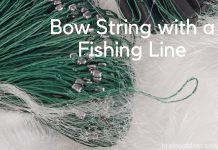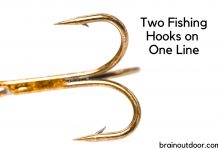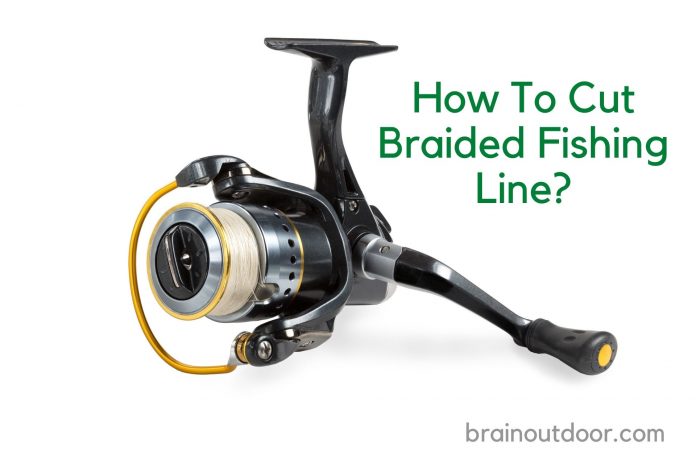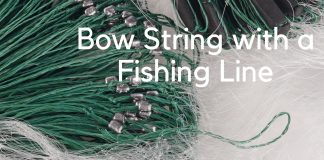Anglers prefer to use the braided fishing line due to its strength and durability. Cutting fishing lines is very easy, but with braided lines, you require more rigid tools that can withstand the tough braid.
Braided lines are essential when fishing for bigger fish. There are tools to help you when you need to cut them.
However, not everyone can get the perfect cut as it requires sharp tools and the knowledge on how to do it. In this guide, we shall look at the ways on how to cut braided fishing line.
Braided Fishing Lines
Braided fishing lines are made of a very tough synthetic fiber that doesn’t cut easily. Lines with thread are easy to cut than those with a wire because they need very sharp tools that can cut metal.
A braided fishing line will contain this thin string of wire or a thread intertwined together to form one thick line. The moment it gets snagged, you realize cutting it becomes problematic. Therefore, when cutting, you will need the appropriate tools to help you with the job. Not all cutters are suitable for cutting these types of fishing lines.
What To Use For Cutting?
There are so many tools you can use to cut the braided fishing line. The right tool will leave you with a clean-cut braided fishing line. Some of the tools that work well include craft scissors, braid snips, and micro-tip scissors. You can comfortably cut or trim a braided line with a pair of scissors, snips, and side cutters.
The best ones in the market include snip braid cutters, a Swiss army pocket knife, micro-tip titanium scissors, a stainless-steel fishing pliers, among others. You do not have to struggle with getting the perfect cut and smooth line in the ends with any of these tools. With that said, here are a few things to look for when cutting a braided fishing line.

Sharp Cutting Tools
You can get good precision with a blunt tool. A sharp cutting tool also makes work more manageable as you do not have to struggle to bring the knots apart. If the cutting tool you are using is very blunt or even rusted, you cannot use it to cut through the braided line’s thickness. And even if you manage to cut it, it will take forever and leave the braids’ edges with rough ends.
Precision
Tools with sharp blades give a nicer and smoother precision than what a blunt one gives. To get a meticulous cut, don’t focus just on the edge only. The cutting tool should also be lightweight and stiff when held. It is easier to cut with a short blade than it is with a bulky one.
Hard Edges
A cutting tool with hard edges at the blade makes the cutting process effortless. The blade doesn’t go blunt quickly, and if you were to cut many braided fishing lines, it would not disappoint you. Hardened edges are not prone to frequent wear as it goes through the fibers of the fishing line.
1. Hold The Fishing Line
Get hold of the braided fishing line you wish to cut in your hands. Use your index finger and the thumb for a good grip. You should firmly hold it to avoid chances of it slipping away from your hands. A firm grip will enable you to create enough tension. If, by any event, you lose grip, repeat the process if you want to end up with a straight cut in the end.
2. Create Tension
On the spooled line tied to the fishing reel, create tension by pulling against it. Do not stop pulling until you notice the slacks on the strands aren’t invisible anymore. You know you have made the needed tension when the margins become invisible. When creating pressure against the spooled reel spooled and you still see the slacks, do not continue cutting but continue creating more tension.
3. Start Cutting
Now that you have created enough tension, take your cutting tool and cut through the line. Use a sharp blade as you need to get a clean and precise line after the cut. A blunt edge will make you go over it several times before you complete the cutting process. A sharp blade allows you to cut it once in a more precise manner and end up within a straight cut. The trick is to get a clean straight line with just a single cutting.
If you make angles in your cutting process, you are bound to end up with uneven ends after you get done cutting. Jagged strands constitute a significant cause of tangling, and detangling the braid is not an easy thing to do if you end up there. Tangling can continue even after you finish the last step of melting the ends in a small source of flame.
4. Get Rid Of The Frayed Ends
Even with a sharp blade, you might still end up with frayed ends though not much as the one cut with a blunt one. Hold the braided over a candle flame to melt it. Melting the frayed lines leaves with even ends to avoid tangling. The point is not burning the braided line, and you should avoid this by being very careful when melting the frayed ends down. If there were angling and it is even, you run the risk of damaging the whole braid trying to get it even.
Cutting braided lines can be a little challenging if you are new to it. But with the right tools and methods, it shouldn’t be a problem anymore. When cutting a fishing braid, you need to use sharp tools. However, practice extra precaution if you do not want to end up accidentally hurting yourself. If you do not have a pair of scissors, try a Swiss army knife. It’s all about precision and how you get to hold the braided line. If you grip it firmly, you will not struggle with tension and cutting. If by accident, you do not end up with a non-precision line, you can melt it for a few seconds to become even at the ends.
































